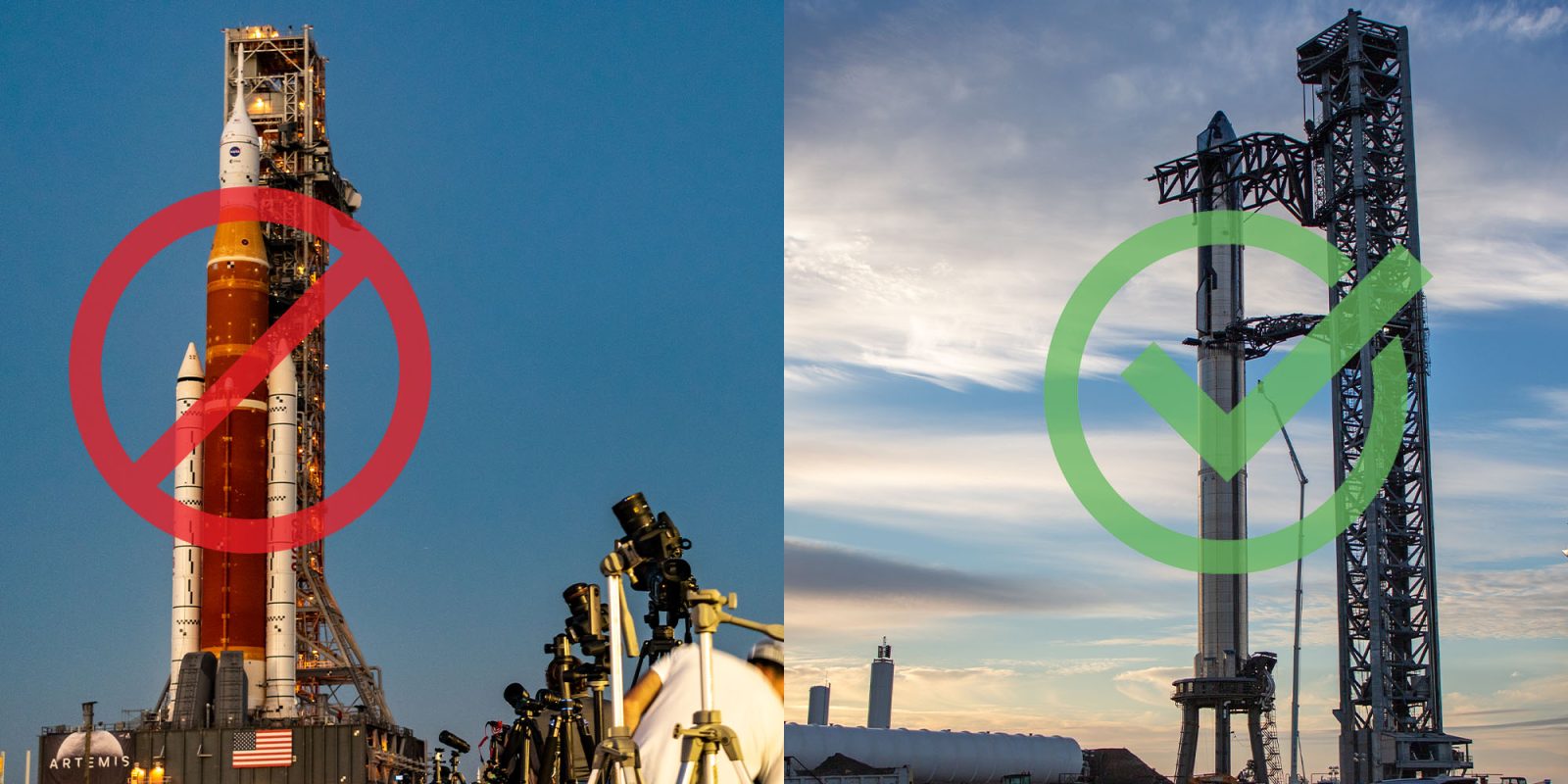
In an interview with the German publication Der Spiegel, NASA Administrator Bill Nelson discussed the question many have been asking for a while. Why doesn’t NASA ditch SLS and replace it with SpaceX’s cheaper and more capable Starship rocket?
NASA has been working toward launching its Space Launch System (SLS) rocket for a long time, and the price has skyrocketed to several billion dollars per launch. In contrast, SpaceX is building a fully fueled rocket that, if Elon Musk is to be believed, will hardly cost more than the fuel needed for launch. The rocket has already been entrusted to land Artemis astronauts on the surface of the Moon in 2025, so why not cut out a step and launch the crew on Starship? Administrator Nelson finally gave his thoughts on that idea.
There’s only one rocket that’s ready to launch: our SLS. And the Orion space capsule at its tip is also the only vehicle in which the crew can survive the return to Earth. At some point, Elon Musk would like to be able to do the same with his Starship. But we have to deal with the practical here and now.
Administrator Nelson via Der Spiegel
Nelson seems to blow off the idea of launching crew directly on Starship to the Moon instead of SLS but also doesn’t sound like he hates the idea. A perfect politician’s answer.
Starship could replace SLS and Orion, but not in the near future
Nelson talks about the here and now and states that SLS/Orion is the only rocket ready to launch. Some may argue SLS is no more prepared to launch than the fully stacked Starship we saw earlier this year. However, SLS has a much clearer path towards launch and obviously more development time under its belt.
So when the administrator says, “we have to deal with the practical here and now,” he is talking about the short term. To NASA, SLS is ready, and for now, it’s the only rocket in the near term to launch Artemis crew. Although it wouldn’t be wise for NASA to stick with this mindset into the late 2020s, Starship should be well tested and flight-proven, assuming the development phase succeeds.
It would, in fact, be practical for NASA to move away from SLS when a commercial competitor becomes available like Starship. Between cost savings and less reliance on congress footing the billions for yearly launches, like the later plans for the Artemis program show.
We could see SLS live a similar role with Gateway as the Space Shuttle did at the end of its life with the International Space Station – it serving to launch and assemble NASA’s Gateway lunar space station before being retired in favor of commercial options. However, with no Russian involvement so far with Gateway, any gap in that transition wouldn’t be possible.
NASA plans to launch Artemis I this year
After completing a mostly successful wet dress rehearsal, NASA rolled back its Artemis I SLS rocket to the Vehicle Assembly Building at Kennedy Space Center. The agency is hoping for a launch as soon as August, but we will have to wait and see how word progresses in getting the rocket and launch site ready for that mission.
FTC: We use income earning auto affiliate links. More.


Comments